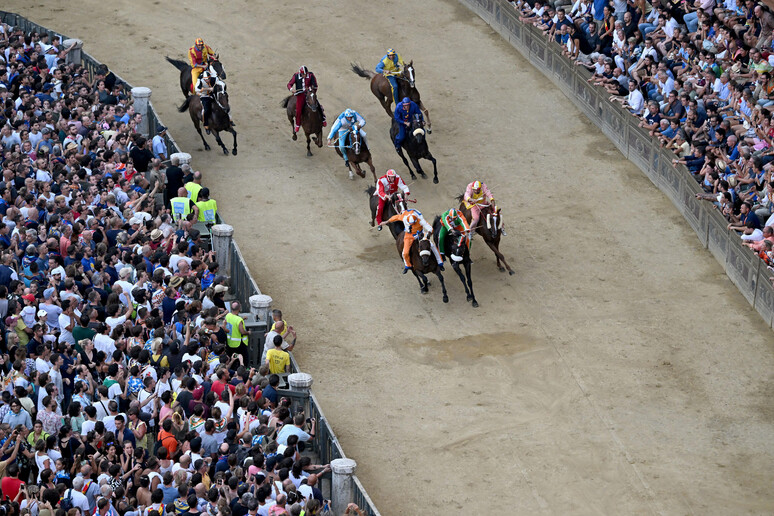'scosso' (riderless) horse from the Oca (Goose) contrada on Wednesday night won the Siena Palio devoted to Our Lady of the Assumption, the historic district's second win in the iconic medieval bareback gallop since July last year.
The bay gelding, Zio Frac, won according to the rules despite its jockey Carlo Sanna aka Brigante being de-horsed halfway through the legendary race.
Oca took the lead after the Giraffa and the Pantera fell, and held on after a later fall of its chief enemy, the Torre.
Several horses ended the race without their riders.
The Palio, meaning "banner", dating back to the 13th century, is one of Italy's most colourful tourist attractions although many newcomers to the event are shocked at how violent it can be and how much deep-rooted intraurban enmity it arouses.
Before the race Mayor Nicoletta Fabio caused a stir by claiming the storied event "is not a tourist attraction and never will be" despite the presence of Tourism Minister Daniela Santanchè.
Meanwhile Tuscany Governor Eugenio Giani said he would continue to push for it to be granted UNESCO status.
Siena's world-famous race, which formed the backdrop to the opening sequence of the 2007 James Bond film Quantum of Solace, takes place each year on July 2 and August 16, although some years have an extra one at the beginning of September.
Jockeys from ten of Siena's 17 'contrade' or neighbourhoods compete for the silk prize in the 90-second hurtle around the Piazza del Campo.
The only rule in the competition is that the jockeys, or fantini, mustn't grab the reins of their adversaries. That means whipping a rival's horse or even knocking a jockey off his steed is allowed.
Victory goes to the first horse to complete three laps of the square, even if it arrives at the finishing post without a rider.
The chaotic race in Siena's main square attracts thousands of visitors each year who are mostly oblivious to the punishment the horses take.
But animal rights activists have long campaigned to get the event banned, saying it is cruel, has little to do with sporting skill and is dangerous for the horses, jockeys and spectators.
More than 50 horses have died on the course since 1970.
ALL RIGHTS RESERVED © Copyright ANSA











